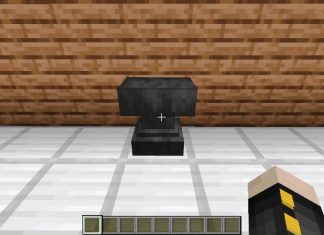Soccer is played on fields of varying sizes and is also known as football outside of North America. The Size of Soccer Field is important to know whether you’re a fan trying to understand the dimensions or a coach trying to plan a practice area. We’ll delve deeply into a soccer field’s specifications in this Size of Soccer Field article. So let’s check out everything about the Size of Soccer Field article.
Soccer, or football as it is known around the world, is more than just a sport; it is a language that is spoken passionately and with the feet. The soccer field, where these magical moments take place, is essential to every dribble, pass, and goal. The dimensions of the field have changed as a result of standardized practices, changing the very nature of the game even though it may just appear to be a patch of grass with goals and lines.
In this investigation, we delve into the specifics of soccer field dimensions and provide insights for both amateurs and experts. Understanding the arena where legends play can increase your appreciation for the sport, whether you’re organizing a local competition or just satisfying your curiosity.
(Revealed) Size of Soccer Field – A Game So Big
Now let’s get to know more about this Size of Soccer Field guide.
Introduction to Soccer Field Dimensions
First and foremost, it’s critical to comprehend that a soccer field’s dimensions can vary, particularly depending on whether they meet FIFA (Fédération Internationale de Football Association) or standards set by other governing bodies.
Standard FIFA Regulations
In accordance with FIFA’s “Laws of the Game,” a soccer field must meet the following specifications:
- Length (touchline): Minimum of 100 meters (328 feet) and maximum of 110 meters (360 feet).
- Width (goal line): Minimum of 64 meters (210 feet) and maximum of 75 meters (245 feet).
There are more stringent restrictions for international games, though:
- Length: Between 100 meters (328 feet) and 110 meters (360 feet).
- Width: Between 64 meters (210 feet) and 75 meters (245 feet).
Features of the Soccer Field
The field also includes the following additional elements in addition to the outline:
1. Center Circle:
- Diameter: 9.15 meters (30 feet)
2. Penalty Area:
- Distance from goal post to penalty mark: 11 meters (36 feet)
- Length: 16.5 meters (54 feet)
- Width: 40.3 meters (132 feet)
3. Goal Area:
- Length: 5.5 meters (18 feet) from each goalpost
- Width: 18.32 meters (60 feet)
4. Goals:
- Depth: 2.44 meters (8 feet)
- Width: 7.32 meters (24 feet)
Variations Based on Competition Level
Although FIFA’s rules are generally accepted, there are some exceptions:
- Youth Soccer: Smaller fields ranging from 55 x 35 yards for under-6 players to 100 x 65 yards for under-18 players.
- Futsal (Indoor Soccer): Usually 40 x 20 meters.
- Women’s Soccer: Adheres to FIFA standards for international matches.
Field Markings
Important markings are included on a well-maintained soccer field as well:
- Touchlines & Goal Lines: Bordering the field.
- Halfway Line: Dividing the field into two equal parts.
- Penalty Spots & Arcs: Essential for free-kicks and penalty shootouts.
- Corners: Denoted by quarter circles and flags.
Soccer Field Surface Materials
While grass has traditionally been used for soccer fields, other materials are now employed:
- Natural Grass: Traditional choice, that offers cushioning and a natural feel.
- Artificial Turf: Popular for durability and low maintenance.
- Hybrid Grass: Combines natural grass with synthetic fibres for resilience.
Table of Key Dimensions
Here are the main measurements of a typical FIFA soccer field for quick reference:
| Component | Dimensions |
|---|---|
| Field Length | 100m – 110m (328ft – 360ft) |
| Field Width | 64m – 75m (210ft – 245ft) |
| Center Circle | Diameter: 9.15m (30ft) |
| Penalty Area | 16.5m x 40.3m (54ft x 132ft) |
| Goal Area | 5.5m x 18.32m (18ft x 60ft) |
| Goal Depth & Width | 2.44m x 7.32m (8ft x 24ft) |
Conclusion
The dimensions and characteristics of a soccer field are essential to the sport. Although FIFA established standard sizes, there are variations depending on the level of competition. Regardless, being aware of the requirements helps one enjoy the game more and ensures that it runs smoothly. So this is all about the Size of Soccer Field article guide.
Hope you like this Size of Soccer Field from here now. While figures and measurements provide the framework, a soccer field captures the essence of the most popular sport in the world. The Size of Soccer Field and the layout of every stadium, from the neighbourhood fields where future stars take their first steps to the grand stadiums that resound with the anthems of thousands, are crucial in determining the dynamics of each match.
Hope you enjoy reading this type of Size of Soccer Field content. Understanding these aspects not only enhances our enjoyment of the game but also highlights how universal it is. The meticulously marked lines and precisely measured areas of the soccer field make it more than just a place to play; it also serves as a blank canvas on which stories are created and dreams come true. If you embrace the knowledge, every game you play or watch will come to life in a completely new way. If you enjoy checking or reading the Size of Soccer Field then please do share the Size of Soccer Field with others as well also.
Frequently Asked Questions (FAQs) –
1. What is the official Size of Soccer Field which is FIFA-approved?
International matches must be played on fields that are between 100 meters (328 feet) and 110 meters (360 feet) in length and 64 meters (210 feet) and 75 meters (245 feet) in width, according to FIFA regulations.
2. How do youth soccer field dimensions differ from standard sizes?
Youth soccer fields come in a variety of sizes depending on the age group, from 55 x 35 yards for players under 6 to 100 x 65 yards for players under 18.
3. Are artificial turf fields approved by FIFA?
Yes, FIFA has approved the use of premium artificial turf for games, particularly in locations where maintaining natural grass is difficult.
4. What are the dimensions of the goal on a standard soccer field?
A typical goal measures 2.44 meters (8 feet) in depth and 7.32 meters (24 feet) in width.
5. Why do soccer field dimensions vary?
While FIFA sets forth specific requirements, fields may differ because of things like space constraints, regional governing body rules, or the unique requirements of a facility or competition.
6. How are soccer fields different from American football fields?
Soccer fields tend to be bigger and emphasize continuous play. In contrast, American football fields are made for quick bursts of play and have designated yard markings.
7. Are there any specific markings required on a soccer field?
Yes, soccer fields have corners, arcs, halfway lines, touchlines, and goal lines. These markings support play execution and game rules.
8. Do women’s soccer fields have different dimensions?
FIFA rules are followed when playing women’s soccer in international competitions. Regional competitions, however, might differ depending on the local governing bodies.
9. What’s the difference between futsal and standard soccer in terms of the Size of Soccer Field?
Due to the fact that futsal is an indoor variation of soccer with fewer players, it is typically played on smaller fields, typically measuring 40 by 20 meters.
10. What is hybrid grass?
Combining natural grass with synthetic fibres, hybrid grass has the resilience of artificial turf while still having the look and feel of real grass.
By including these FAQs, you give readers quick answers to frequently asked questions, improving the content’s relevance and searchability.

















